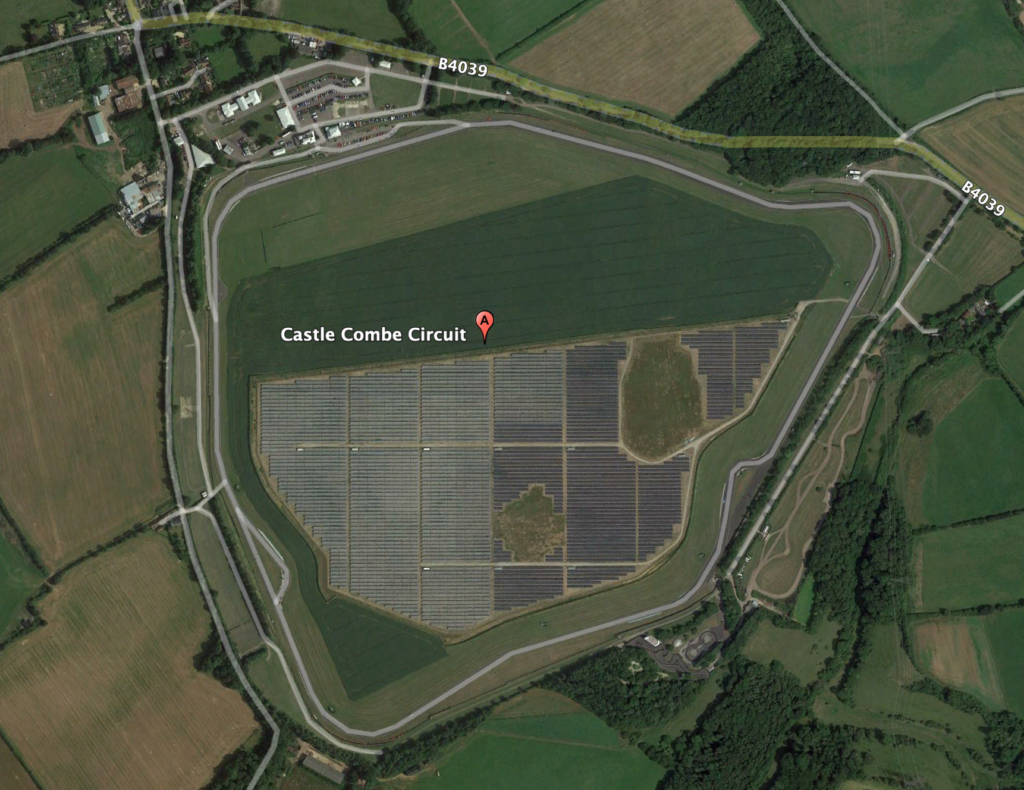On Friday, 4th August, we visited Castle Combe race track in Wiltshire to look at two technical aspects of high-speed driving – brake control and cornering stability at high speed.
Castle Combe is known to be a very fast track, where speeds of well over 100mph can easily be achieved even with moderately powered vehicles. We used our BMW Z4 training car to highlight the importance of vehicle control at speed, along with braking. The track is fast and requires a certain level of confidence to drive quickly. One good thing about the organised open track day was the fact only a certain number of cars were allowed on the track at once, giving us lots of safe opportunities to make progress in relative safety.

Why do you need to know high-speed control and braking on a road car?
We regularly reached speeds of just under 120mph in the Z4. You may be thinking, why would you need to reach such speeds if all you’re doing is looking at “on-road” driver development? It’s true these speeds have no place on UK roads. However, the session was more about using inflated speed to highlight how important it is to make sure you are keeping the car as balanced and as stable as possible.
At 50mph, this may not be quite as important, and if you’re lucky, you could probably get away with a few lapses. Lapses such as not applying the brakes perhaps as quickly as you could, or not paying quite as much attention to the road surface. But the faster you go, the more you need to pay critical attention to yourself, your car and your driving environment.
At speeds of almost 120mph and then performing pretty much an emergency-style braking into a corner, you are forced to be as smooth and accurate as possible. All your inputs need to be quick, controlled and safe. A safely balanced car, with quick and purposeful braking, making sure you’re placing the car on the best part of the track for maximum grip and control are all key.
Most drivers don’t brake hard enough soon enough…..
Most drivers, when braking, have a tendency to increase the braking pressure the closer they get to a hazard – sometimes to an alarming degree once they realise they are going a little too fast – we have all been guilty of this.
When driving at very high speed, it’s critical you DONT do this, and apply increased pressure at the very start of your braking, then taper it off the closer you get to a hazard. It’s not so much an issue at moderate road speeds; however, by taking a performance driving approach to braking can mean you’re in much more control when you approach a hazard, whether that be a corner on a race track you’re approaching at 100+ mph or a row of parked cars when you’re slowing down for in a 40 mph limit road. Scrubbing off speed gives you control.
When braking from almost 120 mph, you also need to make sure the car is balanced – again, relating to on-road driving, you may not be driving at these speeds, but it’s still vital you remain in control. This is especially important if you’re on fast rural roads, which can have varying cambers and road surfaces. Suddenly jumping on the brakes while on a corner in the wet, which has a less than favourable road surface, is not ideal.

What about cornering?
One other thing we looked at was cornering – with a specific focus on balancing the car at high speed. The session was not about how fast we could take a corner but how stable we could make the car at cornering speeds of slightly over 100 mph. During this session, we placed specific attention to steering inputs and placing the car on the best part of the track and taking the safest line. At just over 100 mph, the car was getting close to its limits and was showing subtle signs of such, such as an approaching tyre squeal and slight fidgeting of the vehicle as it moved around slightly over the slight variations in the track surface. By setting the car up on its trajectory as soon as possible, we got to enjoy the ride as the car hit the apex of the corner as we further accelerated up to the fastest part of the track (approach to Avon Rise).
One thing we often teach with our advanced driving courses is IPSGA (Information, Position, Speed, Gears, Accelerate). This is also known as the System of Car Control and is a systematic way to drive in a safe and progressive way. While track driving is very much different to road driving, again, we can again draw similarities – here on track, we were taking information – the visualization of the corner, position – setting our position for the safest line, speed – making sure we were at the right speed, gear – we stayed in 4th at around 6,000 rpm, acceleration – up to just under 120 mph for the final straight.
The day was a lot of fun, and we highlighted the key importance of vehicle stability – regardless of what speed you are doing. It also highlights the importance of being speed aware, as the faster you go, the less forgiving the laws of physics tend to be.
And if you go too fast, physics will always beat you.
We offer a bespoke performance driving course for those that wish to learn safe high-speed vehicle control. More Info.

